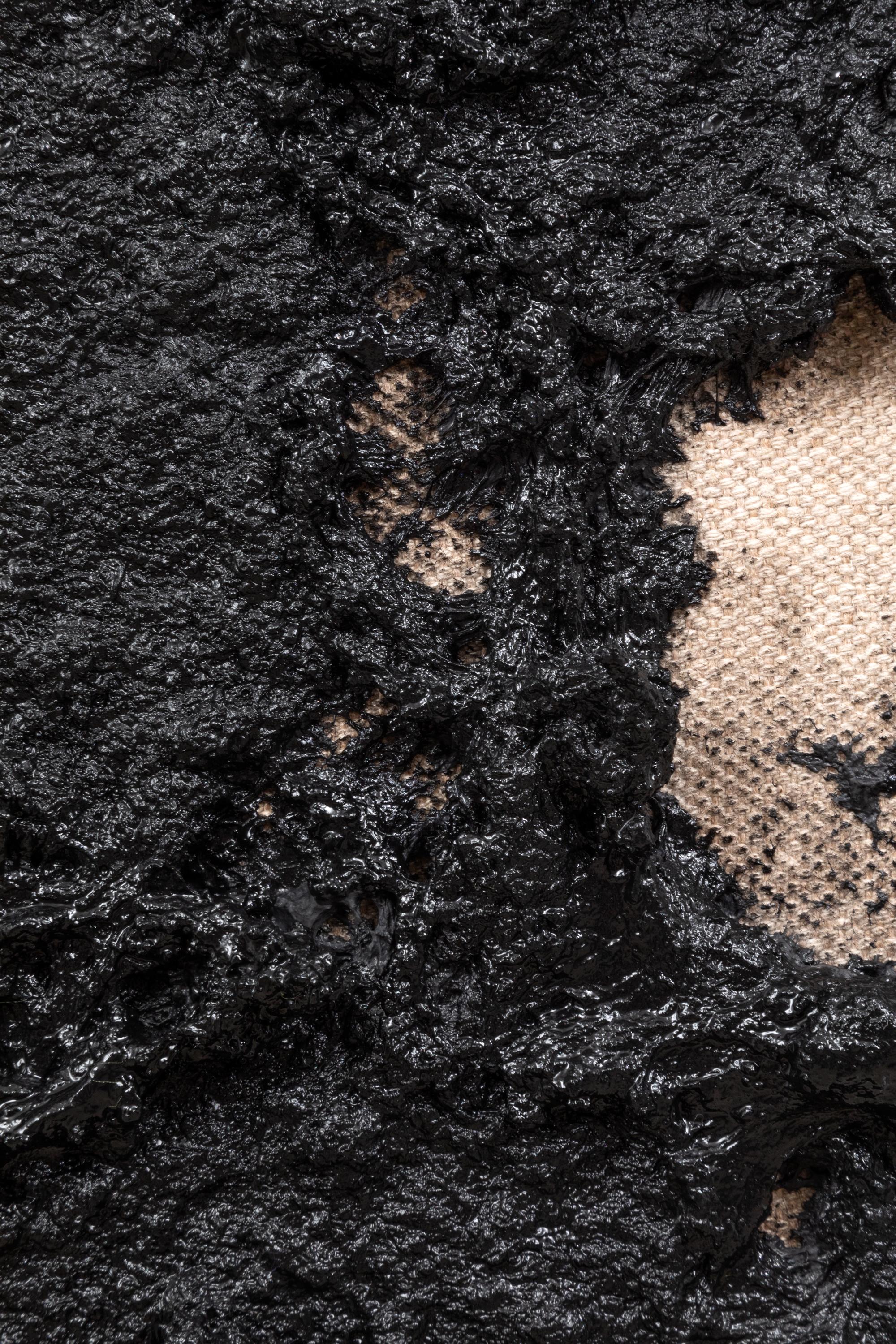
Zander Gallery is pleased to present an exhibition of ten new sculptural paintings and a large-format triptych by Trinidadian-American artist Allana Clarke. With a powerfully unique material aesthetic, the wall works on linen blur the boundaries between painting and sculpture, questioning the hierarchies of classical art genres. Clarke borrows the unusual and central material for her works from the beauty industry, using black hair bonding glue as her raw material. The color black—and concepts of Black identity—have an aesthetic dimension as well as cultural and political dimensions for the artist. The abstract, chromatically black fields invite viewers to linger in the nuanced shades and discover meaning through duration to develop an understanding of the vast, ever-shifting potential of (B)blackness.
The process of making the sculptural paintings is both meditative and visceral, almost performative: Clarke pours the liquid glue onto raw linen layer by layer. She pushes the viscous mass forcefully back and forth on the fabric, until the outer layer begins to cure and create a skin-like relief. Small fragments from the production of earlier works are incorporated into new works, adding denser textures. Their surface is at times smooth and shiny, at other times rough and broken. It is reminiscent of topographical or organic structures, nerve fibers or scar tissue—metaphorical traces of vulnerability and resilience at the same time. The artist describes her approach to the material as a way of thinking through repetitive gestures. Hair bonding glue is much more than just a product for hair extensions and weaves. On the linen, it becomes a medium. Its use is linked to female beauty rituals and the expectations of conforming to traditional norms. In search of new perspectives on belonging and community, Clarke’s work encourages viewers to rethink notions of beauty, value, and femininity and to acknowledge the complexity of Afro-diasporic realities.
The works in the exhibition refer to the use of black in art history and overcome its entrenched interpretation as a sign of negation, allowing a multiplicity of meanings to emerge. Allana Clarke’s practice is in dialogue with the cultural movement of Black Modernism, exemplified in the USA by artists like the abstract expressionist painter Norman Lewis and the photographer Roy DeCarava, whose portraits are known for their subtle shadows and soft tonality. The binary nature of light and darkness is radically questioned. Against this backdrop, the material becomes a kind of contemporary sfumato in Clarke’s hands, in which shapes blur and boundaries dissolve. In their abstraction, the sculptural paintings create a dynamic relationship between material, form, and perception that continuously shifts and reforms.
Allana Clarke was born in 1987 on the Caribbean island of Trinidad. Today she lives and works in Detroit. Her oeuvre encompasses photography, sculpture, text-based works, video, and performance. Her research-based practice integrates socio-political and art-historical discourses to formulate new, non-hierarchical structures. Clarke studied photography and interdisciplinary practice and serves as an assistant professor at Wayne State University in Detroit. The artist has received numerous awards, most recently the prestigious Kresge Artist Fellowship. The North Carolina Museum of Art mounted her first institutional solo exhibition in 2024. Clarke’s work has also been included in group shows at the Palais de Tokyo (Paris), the FRAC (Nantes), the Marcel Broodthaers Society of America, the Cleveland Triennial for Contemporary Art, among others. Her work is featured in the Bauhaus Centennial publication Bauhaus now: Is Modernity an Attitude. In 2024, Walther König published the monograph Allana Clarke. An Infinitive Breath (Zander Galerie).
Zander Galerie
Schönhauser Straße 8
50968 Cologne
Germany
Zander Galerie
6 Rue Jacob
75006 Paris
France